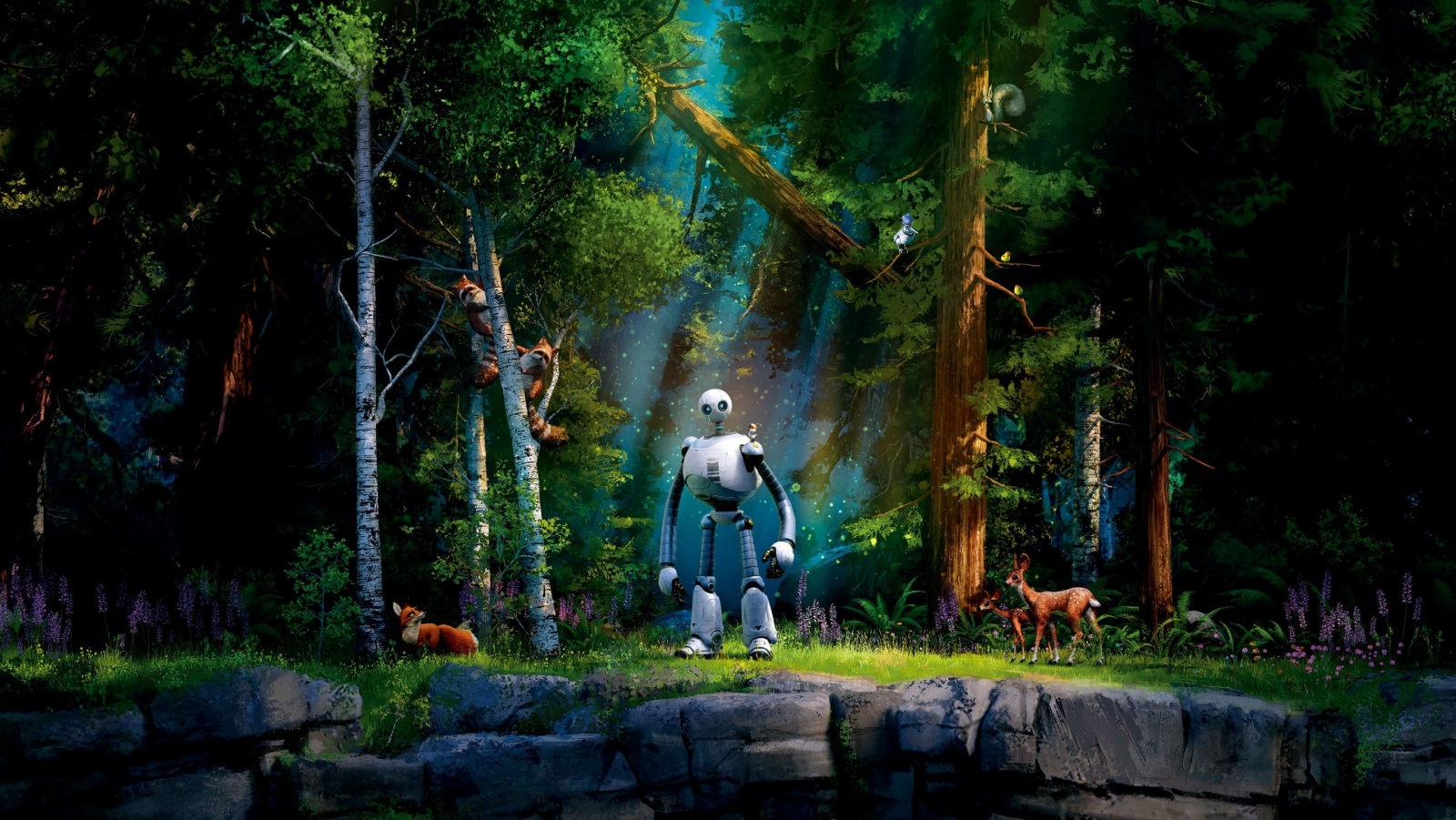
On the afternoon of September 2, the animated film The Wild Robot, produced by Universal Pictures and DreamWorks Animation, held an advanced screening event in Shanghai. With the film’s release in domestic theaters set for September 20 and in North America on September 27, the audience present became some of the very first viewers of this new Hollywood animated blockbuster. Following the screening, director Chris Sanders made a surprise appearance to share his creative insights with the audience.

Director Chris Sanders of The Wild Robot
Unique Visual Effects Blending Hand-Drawn Scenes and CG
Chris Sanders has a formal background in animation from the California Institute of the Arts and has spent over forty years in the industry. He has worked for leading studios like Marvel Comics, Walt Disney Animation Studios, and DreamWorks Animation, contributing to classic films such as Beauty and the Beast, The Lion King, Mulan, and Lilo & Stitch. After becoming a director, he went on to create critically acclaimed series like How to Train Your Dragon and The Croods at DreamWorks.
The Wild Robot tells the story of Roz, a robot designed to serve human families, who washes up on an uninhabited island filled only with animals after being caught in a typhoon. As she learns to survive and assimilate into the wild, she becomes a mother figure to a lost gosling named Brightbill and befriends a somewhat sly fox named Fink, gradually breaking free from her programmed constraints to find her own 'program.' The film features a talented voice cast, including Hollywood stars like Lupita Nyong'o, Pedro Pascal, Kit Connor, Catherine O'Hara, Bill Nighy, and Xu Weilen, while the Chinese dubbed version includes young actor Chen Haoyu among its cast.

Chris Sanders attends the 2024 San Diego Comic-Con, introducing the film’s voice cast.
In discussing the origins of this new work, Chris Sanders revealed, "The inspiration for our animation comes from the original novel The Wild Robot by Peter Brown. I was looking for a new animation project, and by chance, I came across the synopsis of this story and read the book. Right then, I fell in love with it and felt a strong impulse to adapt it into an animated film. In fact, as I was reading, various visual images began to form in my mind. With the support of the DreamWorks animation team, I was finally able to bring this vision to life."
The original book of The Wild Robot is no ordinary piece of work. Published in 2016, it was selected as one of Amazon's Best Books of the Year, a Best Children’s Book by the New York Public Library, and an Outstanding Children’s Book by the American Library Association, and has been translated into multiple languages, including Chinese. “Coincidentally, after I decided to adapt this story into an animation, I told my daughter about it, only to find out that she had previously written a paper on it. This book had been right there with us all along. Learning this made me even more excited. It’s a wonderful opportunity to transform such a beloved literary work into a vivid film,” Sanders said.
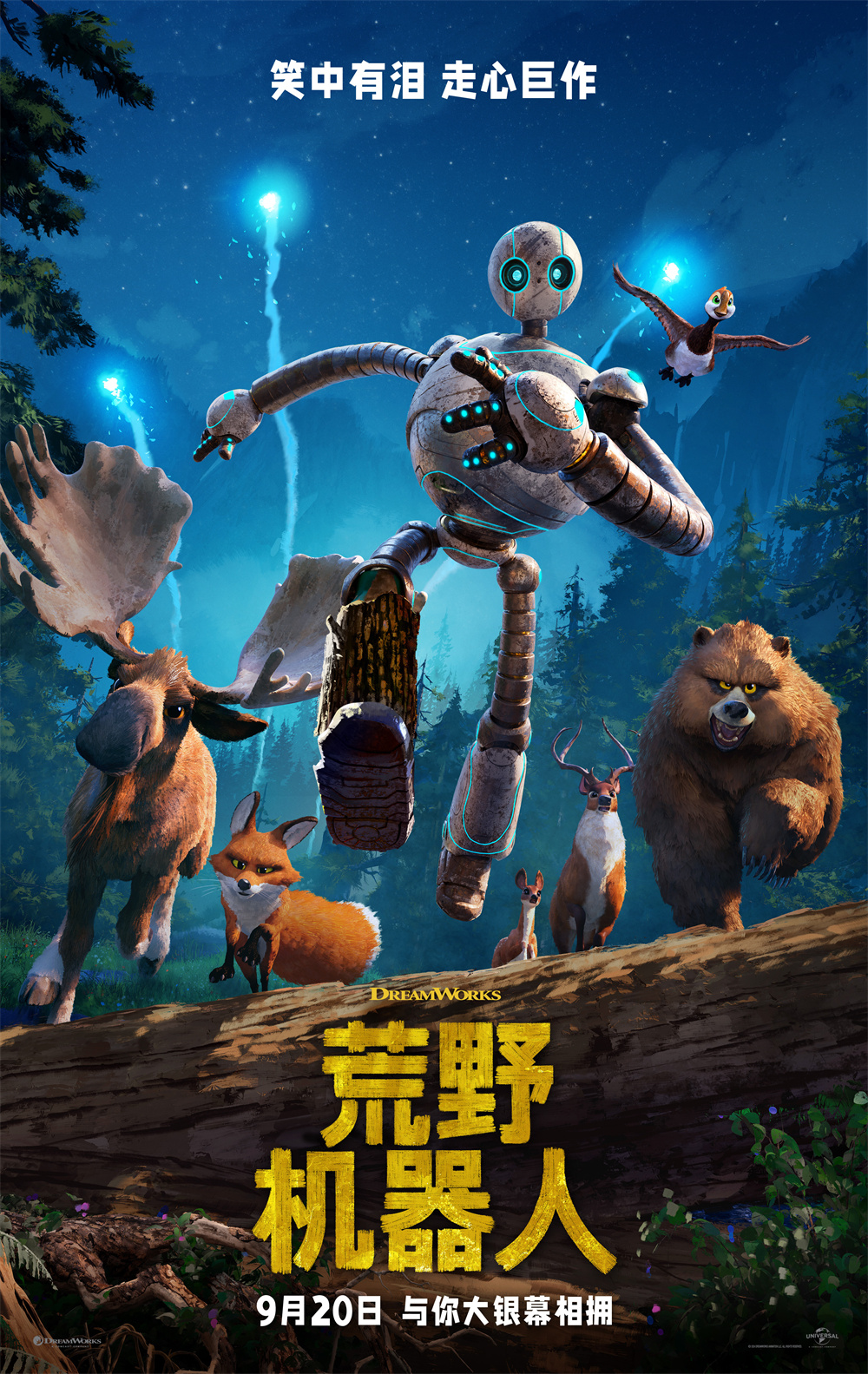
Poster for The Wild Robot
The relationships among the characters in The Wild Robot are filled with emotional nuance, especially between the protagonist Roz and Brightbill, as well as the other animals on the island. Throughout the screening, laughter echoed in the theater, and sounds of audience members reaching for tissues could also be heard.
Regarding the emotional expression in the film, Sanders explained, "In bringing this story to the screen, we strive to retain the essence of the original while also creating a tempo specific to the film. In our movie, dialogue makes up only about 50% of the content, which makes musical elements another significant voice that runs throughout the film. Fortunately, our score was composed by Kris Bowers (known for his work on Green Book and King Richard), who created a variety of emotionally rich music for different times, scenes, and characters. For instance, when Brightbill is learning to fly, I believe expressing that through music rather than dialogue is much more touching. I can say that no previous project of mine has had music play such a significant role. I am deeply grateful to Bowers for this.”
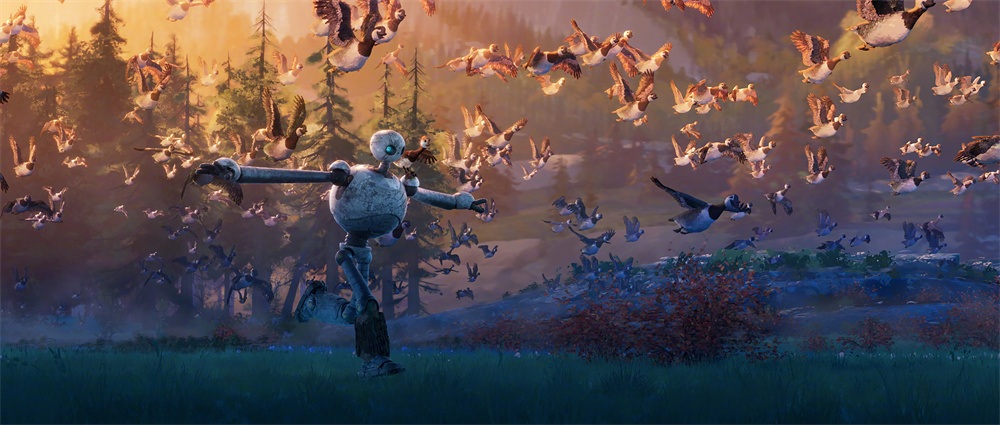
Roz teaches adult Brightbill how to fly
In comparison to its subtle score, The Wild Robot offers viewers an extraordinarily visual experience. The film seamlessly integrates a wealth of hand-drawn scenes with CG effects; the 2D presentation preserves the characters' liveliness, the richness of colors, and the play of light and shadow.
“When I first got into animation, I was very fond of hand-drawn animations like Bambi and the works of Hayao Miyazaki. I hope The Wild Robot can achieve a certain height in artistic expression. So, at the project's outset, I discussed with the animators how to incorporate the beauty of hand-drawing into the actual animation production. We boldly experimented with this approach. Every frame of the background is hand-drawn, including every leaf and butterfly, and I even participated in some of the drawings myself. However, by the time the visuals were actually completed, I started to worry that we might have gone too far, and that those backgrounds might come across as too impressionistic. But when those images combined with the characters and the effects, I found the overall result stunning. At that moment, I realized—we have created something truly special,” Sanders shared.
Every Character is Unique
In a film, character development often serves as the soul of the story. Many films revolve around character growth, but the uniqueness of Roz lies in the fact that she is parentless, emotionless, and her programmed purpose is to assist humans rather than to interact with animals.
When discussing Roz's characterization, Chris Sanders seems unable to stop once he gets started. “Our most crucial task was to find a unique perspective to view this robot. Roz initially had no emotions, but through her encounters with the forest animals, especially Brightbill, she slowly learned what emotions are. It can be said that this is a one-of-a-kind journey, enriching and diversifying Roz’s life. Most importantly, she developed autonomous awareness, which she initially resisted. Just as she initially refused to be a mother to Brightbill, when Brightbill left the island to migrate, she took on the responsibility of caring for other animals. This represents a change and growth unique to her.”

Roz surrounded by animals

Roz with young Brightbill
“On the other hand, this transformation is also reflected in her physical form. Roz is the only character in the film made entirely with CG. Throughout the character’s creation, we continuously changed brushes to design her appearance. When she first appears in the film, you'll notice her material and look have a strong CG feel. As time progresses, her exterior begins to show wear and tear, yet her inner self starts to resemble that of a human, ultimately making her a true part of the island. By the end of the film, when a spaceship arrives and other robots come to take her away, the differences between them become quite evident,” Sanders explained.
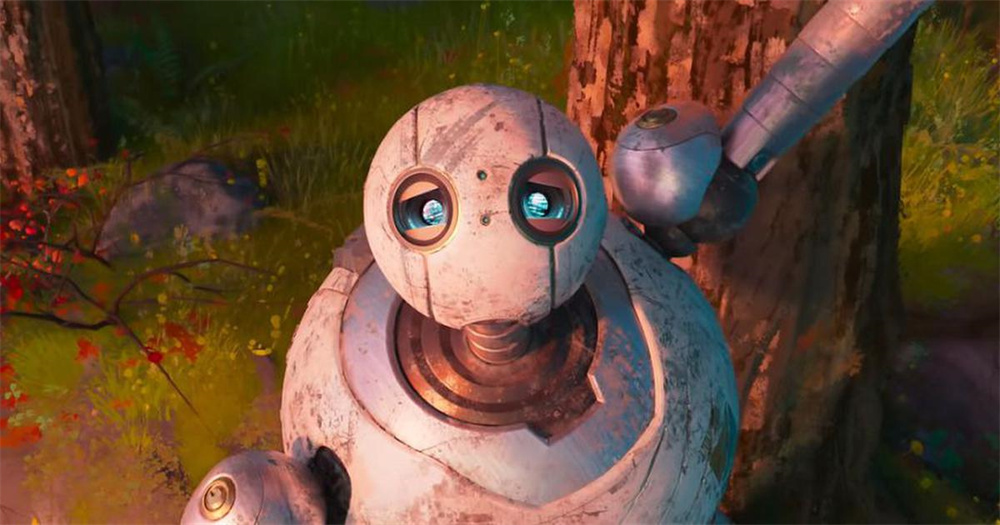
Roz, gradually becoming scarred
In contrast, Brightbill, the gosling whose experiences are more relatable to human growth, prompts Sanders to reflect: “When I first chatted with Peter Brown, he told me that during the writing of this story, he maintained a core idea: kindness can be a survival skill. I later included this line in the script as Fink’s dialogue to Brightbill. And the characters who uphold this principle inadvertently change the culture and survival environment of the entire island.”
“I must say, Kit Connor’s voice performance as Brightbill is very fitting. I personally love his portrayal and consider myself a fan. When I shared the news that he would be voicing the character with Peter Brown, he asked, ‘Who did you say was coming?’ I thought he had someone else in mind, but it turned out he was just thrilled that we were able to get Connor,” Sanders recalled.
In fact, over twenty different types of animals appear in The Wild Robot, each with distinct personalities. For example, Fink the fox serves as a bridge for Roz’s communication with the other animals. The director himself has a fondness for this character—“You can feel the emotional void and trauma in his actions and expressions due to his growth process. This is exactly the kind of multifaceted character I enjoy shaping.” As for the opossum mother with seven kids, the director noted, “We reinvented this character based on the original work. She doesn’t have many lines, but each one is to the point and filled with life wisdom.”
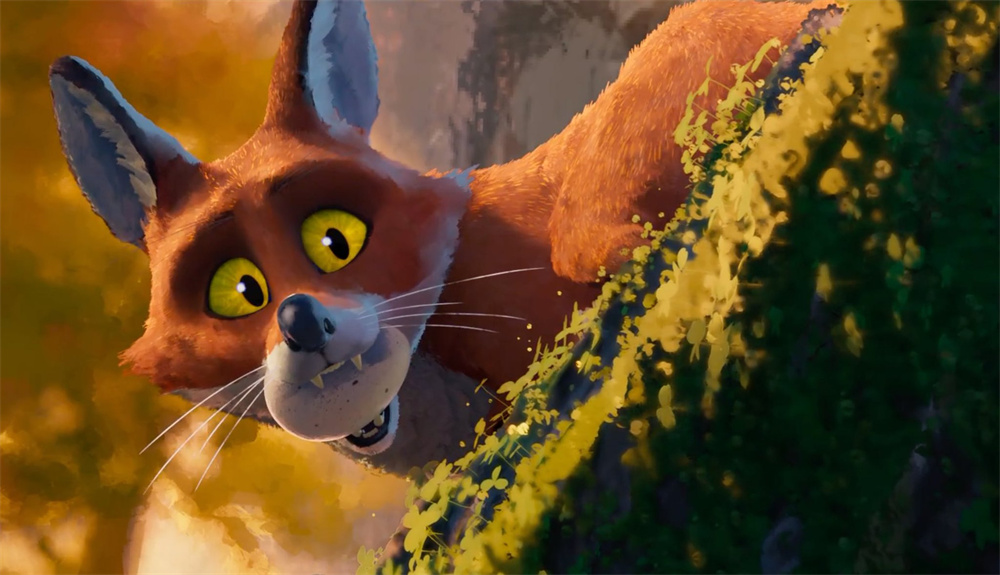
Fink the fox
During the audience Q&A session at the event, director Chris Sanders was asked what feelings he hopes the film will convey. He passionately expressed, “Whether you are a child or a parent, regardless of your type of parent-child relationship, I hope this movie encourages people to reflect on their own life journey. Therefore, I believe that everyone who watches The Wild Robot will experience something different. However, perhaps a common thread is that we each realize that there comes a point in life when we must make some changes. Families are like caves; some feel that hiding within is the correct choice, but if you want to grow, you must leave that cave and embrace risks and challenges. Like everyone else, I dislike change, but it often serves as an opportunity for us to become better versions of ourselves.”

A special three-member family
